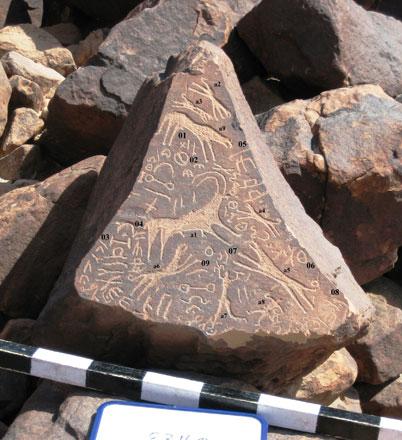You are here
Bringing Dead Sea Scrolls to life
By Saeb Rawashdeh - Feb 02,2017 - Last updated at Feb 02,2017

Photo courtesy of Jordanian Dead Sea Scrolls Project
AMMAN — For those who first fell upon a number of ancient scrolls inside a West Bank cave in 1947, the magnitude of their discovery was slow to reveal itself.
Eventually catching the attention of a biblical scholar and archaeologist, the newly-unearthed documents would “later [be] described as ‘The most important discovery of the 20th century’,” Omar Ghul, an epigrapher from Yarmouk University, explained.
Subsequent search in the region, up until 1956, uncovered more than 30,000 fragments of texts which experts dubbed The Dead Sea Scrolls.
Over the next 60 years, scholars went to “enormous and painstaking efforts in studying and publishing these fragments, putting together, by the year 2009, around 1,000 texts out of them”, Ghul told The Jordan Times in a recent interview.
According to the expert, a considerable share of the texts — dated from the 3rd century BC to the 1st century AD — are copies of the books of the Old Testament.
Others “are copies of the so-called “para-biblical” books, i.e. religious texts that were not included in the official edition of the Old Testament, like the books of Enoch,” Ghul, who has a PhD degree, explained.
The scrolls also contain some 200 texts that give an insight into the beliefs and organisation of the Essenes sect, who many scholars believe lived in Khirbet Qumran.
Inscribed upon parchment, papyri and one copper plate, the texts were written mainly in Hebrew, but Aramaic, Nabataean and Greek were also used.
As well as the ravages of time, wars and occupation have impacted the scrolls.
When bedouin shepherds first discovered the scrolls in 1947, the caves were part of British Mandate Palestine. One year later, however, the Nakbah and the creation of Israel shook the region.
“They became part of the West Bank of Jordan. It was under the Jordanian administration in the 1950s that the rest of the caves were explored for further texts, including ‘Cave 4’, in which some 15,000 fragments of the scrolls were found,” Ghul said.
Work on the Dead Sea Scrolls was interrupted by the 1967 war, however, when Israeli forces occupied Jerusalem and seized the Palestine Archaeological Museum and the scrolls housed inside.
“The occupying [Israeli] authorities hampered the study of the Dead Sea Scrolls for about two decades,” the epigrapher underscored, explaining that they would later be moved to West Jerusalem.
While both acts were in violation of international law, a small number of scrolls had already made it to Amman before 1967, and are now exhibited in the Jordan Museum.
“Besides being part of the global cultural heritage, the Dead Sea Scrolls represent an essential component of the religious and cultural heritage of Palestine and Jordan,” the scholar noted.
“An objective study of these texts would help us better understand the historical roots of the three main religions of the region... and the relationships between them.”
What is needed is an objective study of the texts, “away from any agendas that seek to use these ancient texts to claim modern religious and political rights on the ground, in Palestine and in the region”, he argued.
Another topic worth pursuing in these texts is the development of the concept of the “after life” (eschatology) in Judaism, and how this later manifested in Christianity and Islam.
While the scrolls have drawn immense attention from both the scholarly world and the public, they have not received enough attention from Arab intellectuals, Ghul said.
An exception is the Jordanian Dead Sea Scrolls Project, which has established a library on the scrolls and has published six books.
The project has given more than 200 talks on the scrolls, delivered mainly at schools by graduate students from Jordanian universities, the scholar highlighted.
While the project has had successes, such as revising school curricula to cover the issue, “the main challenge” that faces Arab involvement in studying the scrolls is “the lack of qualified human resources”, according to Ghul.
In order to study the scrolls, one needs to know the languages in which they were written and the contemporary religious texts, with their cultural and historical background, alongside several other tools of textual investigation.
“Building these capacities should be the main focus of those concerned with pursuing the study of the Dead Sea Scrolls in Jordan and Palestine,” he said.
“This task has been partly fulfilled for years now by the Department of Epigraphy at Yarmouk University, in which graduate students are provided with the basic knowledge they need to get involved in this interesting and challenging academic field.”
Related Articles
AMMAN — Ancient texts and inscriptions are among archaeologists’ most valuable finds, offering direct insights into the remains where they a
AMMAN — Since the early decades of the 19th century, numerous Western travellers, clergymen, politicians and scholars visited Palestine and
AMMAN — An ostracon — a piece of pottery broken from a vase — found in 1966 by British archaeologist Crystal Bennett (1918-1987) at Umm Al B
















